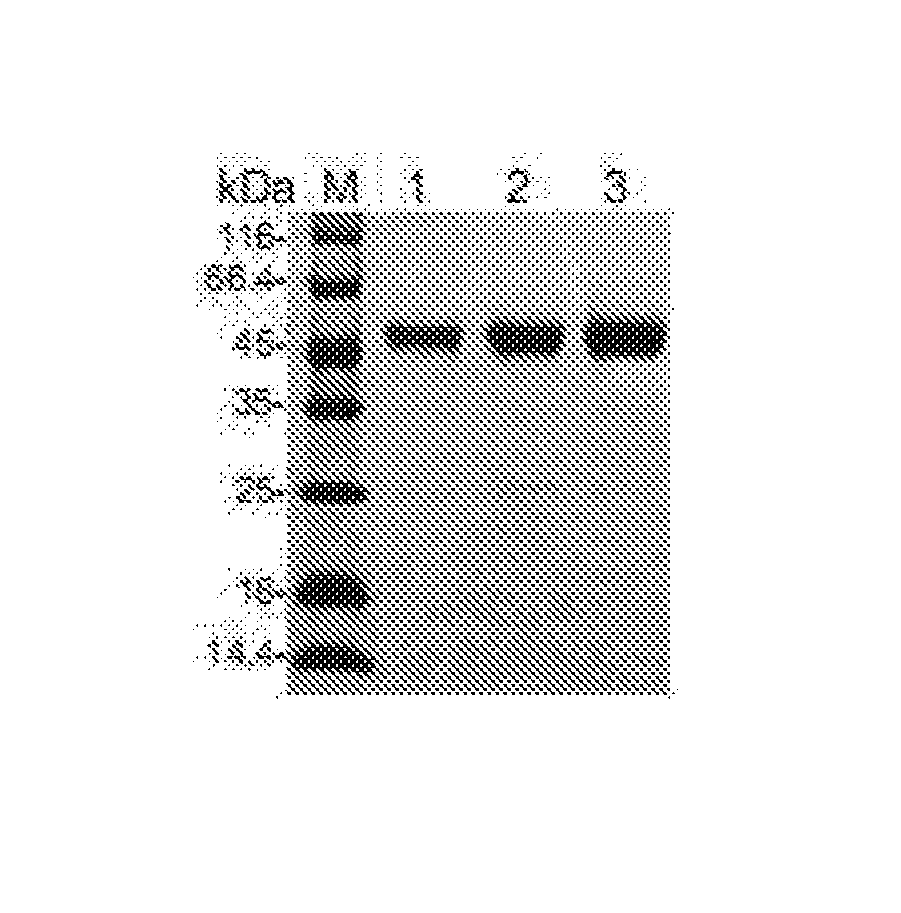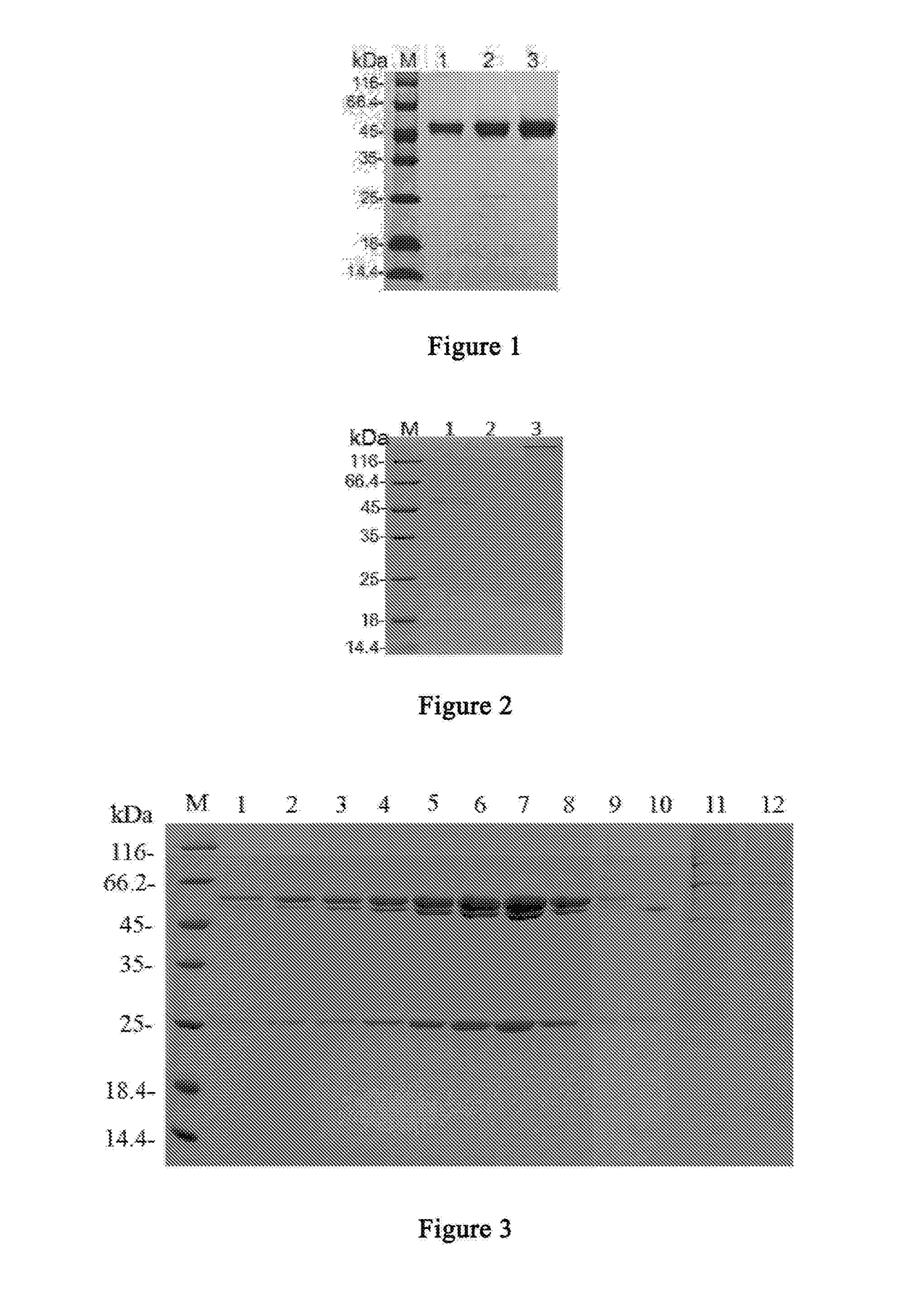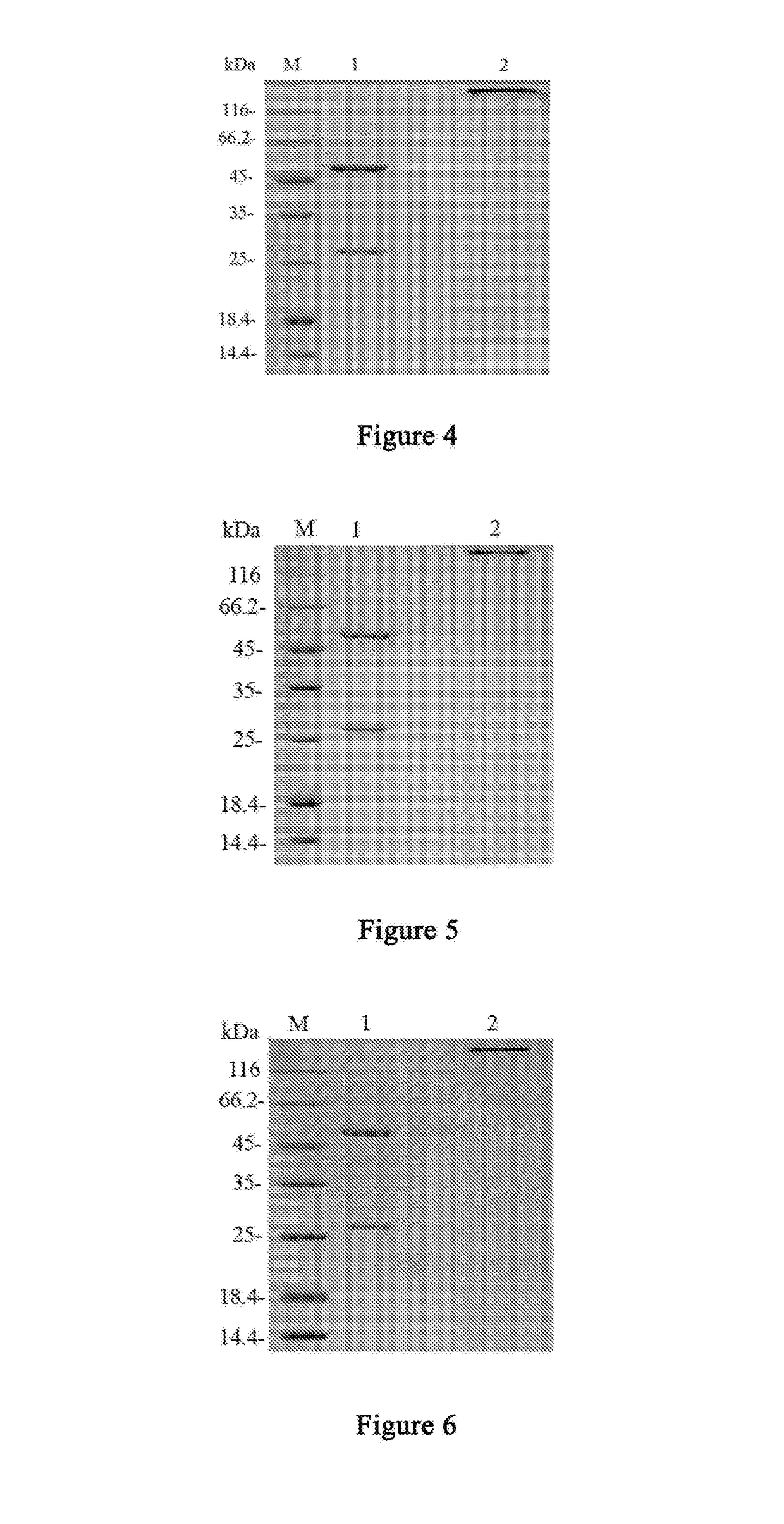An Anti-ctla4 monoclonal antibody or its antigen binding fragments, pharmaceutical compositions and uses
a monoclonal antibody and antigen technology, applied in the field of tumor therapy and molecular immunology, can solve problems such as the development of autoimmune diseases, and achieve the effect of relieving immunosuppression and very effective activation of t lymphocytes
- Summary
- Abstract
- Description
- Claims
- Application Information
AI Technical Summary
Benefits of technology
Problems solved by technology
Method used
Image
Examples
example 1
n of the CTLA4-8D2 Hybridoma Cell Line LT001 and Preparation of the Monoclonal Antibody 8D2
[0115]Recombinant CTLA4 was expressed in a mammalian cell expression system for immunizing mice as antigen, and hybridoma cells were obtained by fusing mouse spleen cells with myeloma cells. A hybridoma cell line (the CTLA4-8D2 hybridoma cell line LT001) was obtained after screening a great number of samples. Said cell line could secret the monoclonal antibody 8D2, which specifically binds CTLA4. The specific methods are described below.
1. Synthesis of the CTLA4ECD-mFc gene
[0116]According to the design (SEQ ID NO: 3), the amino acid sequence (SEQ ID NO: 2) corresponding to the extracellular fragment of the CTLA4 gene (Cytotoxic T-Lymphocyte Antigen 4, NCBI Gene ID: 1493, SEQ ID NO: 1) (CTLA4ECD) was fused to the Fc protein fragment of mouse IgG (mFc), wherein mFc refers to the Fc protein fragment of mouse IgG with the amino acid sequence as shown by the underlined part of SEQ ID NO: 3.
[0117]In...
example 2
tion of the Light Chain and Heavy Chain Sequences of the Monoclonal Antibody 8D2
[0128]Following the instructions of the Cultured Cell / Bacteria Total RNA Extraction Kit (Tiangen, Cat. No. DP430), mRNA was extracted from the CTLA4-8D2 hybridoma cell line (LT001 cell) generated in Example 1.
[0129]Following the instructions of the Invitrogen SuperScript® III First-Strand Synthesis System for RT-PCR kit, cDNA was synthesized and amplified by PCR. The PCR amplification product was immediately subjected to TA cloning, following the instructions of the pEASY-T1 Cloning Kit (TransGen, Cat. No. CT101). The product of TA cloning was immediately subjected to sequencing, and the sequencing results are provided below.
[0130]The results of DNA sequencing of the heavy chain variable region (345 bp):
(SEQ ID NO: 5)
[0131]The protein sequence encoded by it (115 aa):
(SEQ ID NO: 6)
[0132]The results of DNA sequencing of the light chain variable region (318 bp):
(SEQ ID NO: 7)
[0133]The protein sequence encod...
example 3
the Light Chain and Heavy Chain Sequences of the Humanized Antibodies 8D2H1L1, 8D2H2L2, 8D2H3L3, 8D2H2L15 and 8D2H2L17
[0134]Based on the three-dimensional crystal structure of the CTLA4 protein (Nat. Struct. Biol. (1997) 4, p. 527) and the sequences of the 8D2 antibody obtained in Example 2, the structure of the antibody was modeled on computer. The variable region sequences of the antibodies 8D2H1L1, 8D2H2L2, 8D2H3L3, 8D2H2L15 and 8D2H2L17 were designed based on the antibody sequences and the structural model (the constant region sequences of the antibodies were from the NCBI database). The variable region sequences are provided below.
1. The Light Chain and Heavy Chain Sequences of the Monoclonal Antibody 8D2H1L1
[0135]The DNA sequence of the heavy chain variable region (345 bp):
(SEQ ID NO: 9)
[0136]The protein sequence encoded by it (115 aa):
(SEQ ID NO: 10)
[0137]The DNA sequence of the light chain variable region (321 bp):
(SEQ ID NO: 11)
[0138]The protein sequence encoded by it (107 ...
PUM
| Property | Measurement | Unit |
|---|---|---|
| humidity | aaaaa | aaaaa |
| surface plasmon resonance | aaaaa | aaaaa |
| gene structure | aaaaa | aaaaa |
Abstract
Description
Claims
Application Information
 Login to View More
Login to View More - R&D
- Intellectual Property
- Life Sciences
- Materials
- Tech Scout
- Unparalleled Data Quality
- Higher Quality Content
- 60% Fewer Hallucinations
Browse by: Latest US Patents, China's latest patents, Technical Efficacy Thesaurus, Application Domain, Technology Topic, Popular Technical Reports.
© 2025 PatSnap. All rights reserved.Legal|Privacy policy|Modern Slavery Act Transparency Statement|Sitemap|About US| Contact US: help@patsnap.com



